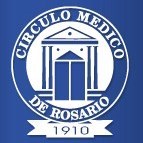Detection of hypertensive values between physicians, nurses and medicine students; in Rosario City
Keywords:
hypertension, cardiovascular risk, healthcare workers, physicians, nurses, studentsAbstract
Objectives. Healthcare workers (HW) and medical students (MS) face a complex reality: long working hours, rotating shifts and numerous services in short periods of time. These variables predispose to the acquisition of unhealthy habits, which could lead to the development of cardiovascular risk factors (CVRF). Since 2017, the Association of Arterial Hypertension of Rosario adheres to the “Conoce y Controla” campaign carried out annually by the Argentine Society of Arterial Hypertension. This campaign does not question about the professions in the included subjects. In a population of HW and MS, our aim was: to describe the frequency of high blood pressure (HBP) and other CVRF; describe the level of knowledge and control among subjects with HPB; and analyze the characteristics of the HBP in relation to each task performed.
Material and methods. Observational, cross-sectional study; made in Argentina in 2018. Results. 426 individuals were included: 108 (25.4%) had HBP -students 7%, physicians 14.2%, and nurses 3.7% (P=.003)-. Being physician was associated with an increased risk of HBP (P=.018). Students with HBP did not know their condition more frequently (P=.006). Nurses with HBP had greater knowledge (P=.003) and better control of it (P=.017).
Conclusions. We found high frequency of HBP among health professionals.
Downloads
Published
How to Cite
Issue
Section
License
Licencia Atribución-CompartirIgual 4.0 Internacional (CC BY-SA 4.0)
https://creativecommons.org/licenses/by-sa/4.0/deed.es






